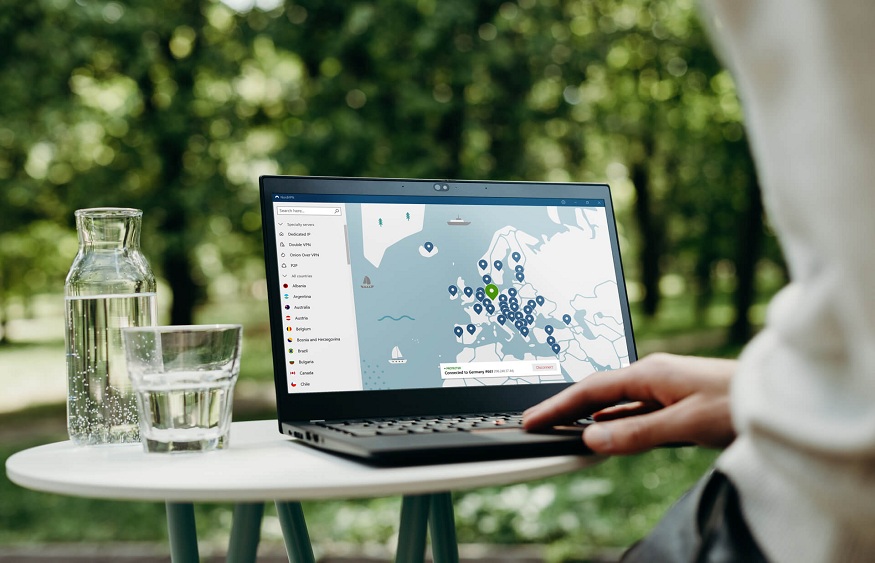The omnipresence of technology brings unprecedented opportunities for businesses, but it also ushers in heightened cybersecurity risks. As cyber threats continue to evolve, organizations must adopt advanced technologies to safeguard their sensitive information and maintain the trust of their stakeholders. Here are cutting-edge technologies that can significantly enhance business cybersecurity in 2024:
Cutting-Edge Technologies to Enhance Business Cybersecurity in 2024
1. Zero Trust Architecture
Zero Trust Architecture (ZTA) is an approach that assumes no entity, whether inside or outside the network, can be trusted. This model emphasizes continuous verification of user identities and devices, regardless of their location. With the increasing prevalence of remote work, ZTA ensures that access is granted based on strict authentication protocols, reducing the risk of unauthorized access and lateral movement within the network. Besides, avoid single sin-on (SSO) systems for the employees.
2. AI-Powered Threat Detection
Artificial Intelligence (AI) plays a pivotal role in bolstering cybersecurity defenses. AI-powered threat detection systems can analyze vast amounts of data in real-time, identifying patterns and anomalies that may indicate a potential security threat. Machine learning algorithms continuously evolve, allowing these systems to adapt to new and sophisticated cyber threats, enhancing the organization’s ability to detect and respond to attacks swiftly.
3. Multi-Factor Authentication (MFA)
Multi-Factor Authentication adds an extra layer of security by requiring users to provide multiple forms of identification before gaining access to systems or data. In 2024, MFA technologies are becoming more sophisticated, incorporating biometric authentication such as fingerprint scans, facial recognition, or iris scans. This ensures that even if passwords are compromised, unauthorized access remains a formidable challenge.
4. Blockchain for Secure Transactions
Blockchain, known initially for its association with cryptocurrencies, is increasingly being adopted for enhancing cybersecurity. Its decentralized and tamper-resistant nature makes it an ideal technology for securing transactions and maintaining an unalterable record of events. In business contexts, blockchain can be employed to secure supply chain transactions, financial records, and sensitive data, reducing the risk of fraud and ensuring data integrity.
5. Endpoint Security Solutions
With the proliferation of remote work, endpoints like laptops, mobile devices, and IoT devices have become vulnerable targets for cyber threats. Advanced Endpoint Protection (AEP) solutions leverage AI, behavioral analytics, and machine learning to detect and prevent malware, ransomware, and other cyber threats at the device level. This proactive approach is vital for protecting both corporate and personal devices connected to the network.
6. Incident Response Orchestration
Incident Response Orchestration involves the automation of response processes during a cybersecurity incident. This technology streamlines incident detection, analysis, and mitigation, enabling organizations to respond rapidly to security incidents. By automating repetitive tasks, incident response orchestration enhances the efficiency of cybersecurity teams, ensuring a swift and coordinated response to emerging threats.
7. Cloud Security Posture Management (CSPM)
As businesses increasingly migrate to cloud environments, ensuring the security of cloud infrastructure becomes paramount. CSPM solutions provide continuous monitoring and management of cloud security, identifying misconfigurations, vulnerabilities, and unauthorized access. This technology ensures that cloud resources adhere to security policies, reducing the risk of data breaches and unauthorized access. Try to use an quality employee monitoring software.
8. Threat Intelligence Platforms
Threat Intelligence Platforms aggregate and analyze data from various sources to provide organizations with actionable insights into current and emerging cyber threats. By leveraging threat intelligence, businesses can proactively fortify their defenses against specific threats, anticipate attack vectors, and enhance their overall cybersecurity posture.
9. Security Awareness Training Platforms
Human error remains a significant factor in cybersecurity incidents. Security Awareness Training Platforms use simulated phishing attacks, interactive modules, and real-world scenarios to educate employees about cybersecurity best practices. These platforms play a crucial role in cultivating a security-conscious culture within the organization, reducing the likelihood of falling victim to social engineering attacks.
Conclusion
Businesses must leverage cutting-edge technologies to fortify their cybersecurity defenses. Technologies like Zero Trust Architecture, AI-powered threat detection, Multi-Factor Authentication, and Blockchain provide multifaceted layers of protection. By adopting these advanced solutions, businesses can navigate the complex cybersecurity landscape of 2024 and safeguard their digital assets, ensuring the resilience and integrity of their operations.




